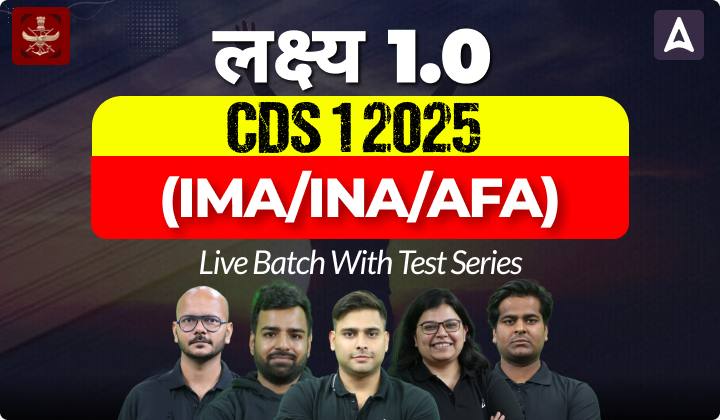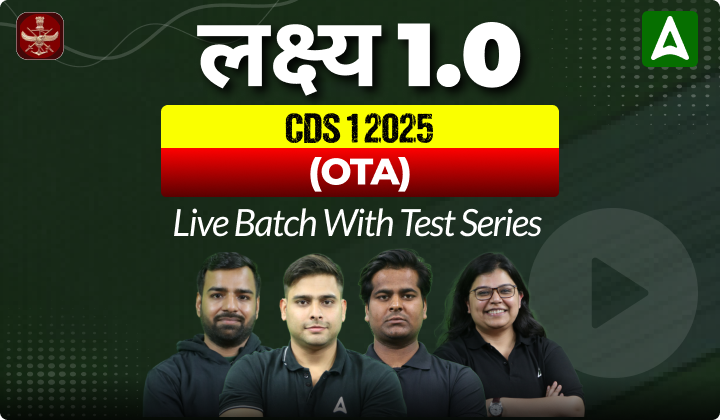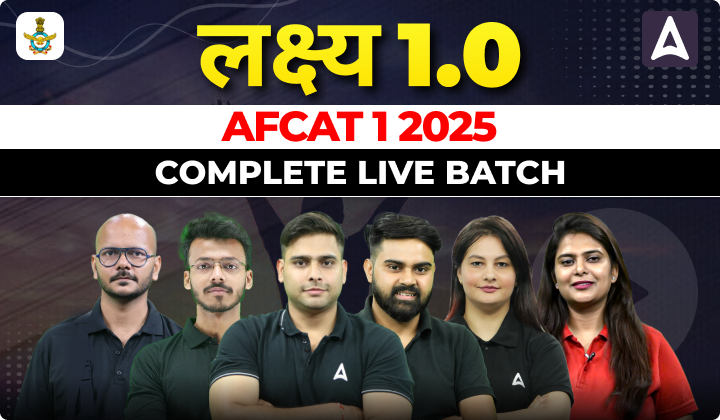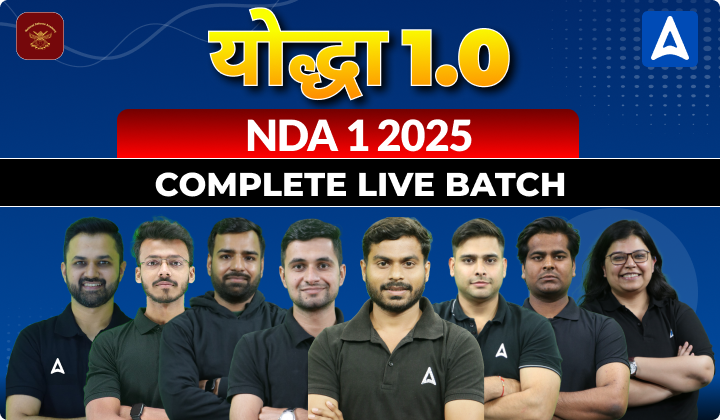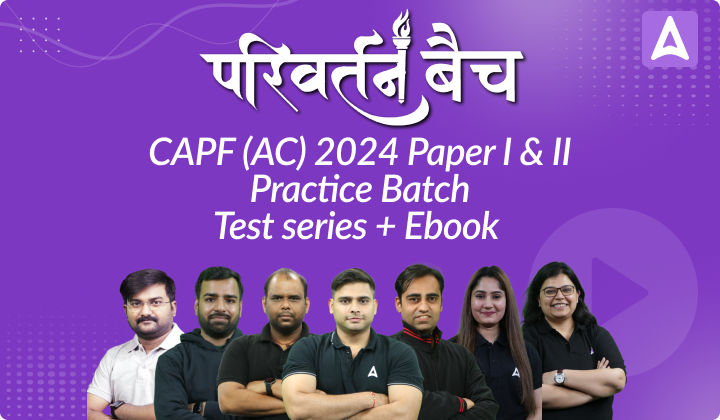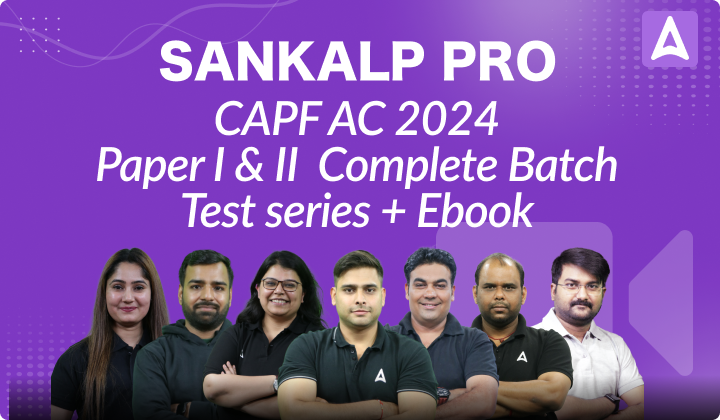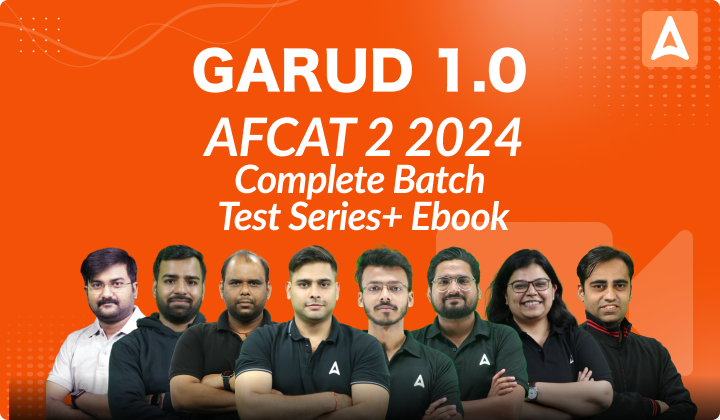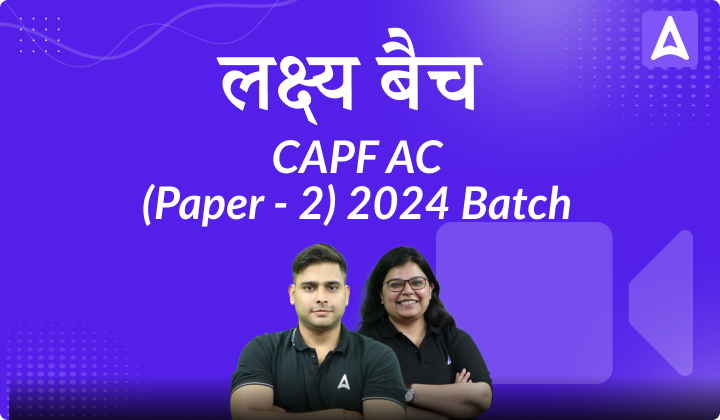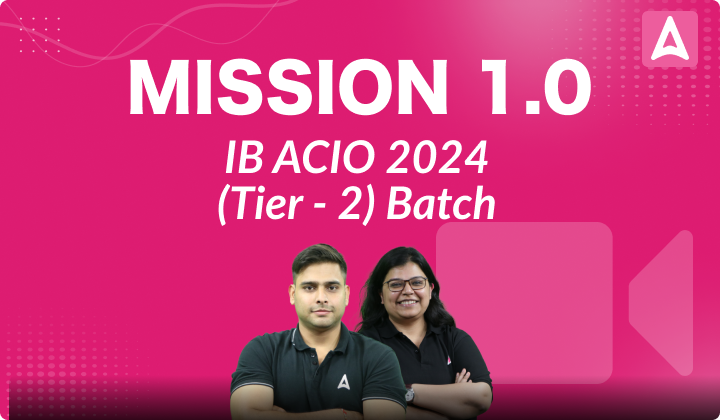UPSC has released the notification for NDA 1 2025, including detailed information about the NDA syllabus for 2025. Candidates preparing for the NDA exam should have a clear understanding of the syllabus. To help with your preparation, we have outlined the complete syllabus and provided the latest updates on both the NDA Maths and GAT syllabus. This article highlights the most important topics that you should focus on to enhance your chances of success.
NDA Syllabus 2025
The NDA 2025 syllabus has been officially announced on 11 December 2024, and is in line with the Class 12 syllabus. Covering essential subjects such as Maths, English, History, Politics, Economics, General Science, Physics, and Chemistry, the syllabus provides a comprehensive base for the exam. Candidates are advised to study all sections thoroughly to ensure success. A detailed guide to the syllabus is now available, highlighting the key areas to focus on for effective preparation.
| NDA Syllabus 2025 | |
|---|---|
| Name of the Exam | NDA I & II 2025 |
| Exam Conducting Body | UPSC |
| Mode of Exam: | Offline |
| Total Papers in NDA Exam |
|
| Total Marks for NDA Exam | Mathematics and GAT 900 Marks |
| Total No. of Questions |
|
| Negative Marking |
|
| Exam Duration |
|
| Official Website | upsc.gov.in |
NDA Exam Pattern 2025
The NDA 2025 exam is structured into two primary sections: Mathematics and the General Aptitude Test (GAT). These sections are designed to assess various skills, including problem-solving, reasoning, and general awareness. Candidates who clear the written exam will advance to the SSB interview, a comprehensive evaluation of personality, leadership, and decision-making abilities. Detailed information about the NDA 2025 exam pattern is provided below for your reference.
| Subject | Duration | Total Questions | Maximum Marks |
|---|---|---|---|
| Mathematics | 2½ Hours | 120 | 300 |
| General Ability Test | 2½ Hours | 150 | 600 |
| SSB Test/Interview | 5 Days | 900 | |
| Total | 1800 | ||
NDA Math Syllabus 2025
The Mathematics syllabus for the NDA examination focuses on assessing candidate’s quantitative aptitude and problem-solving skills. It covers key areas like algebra, trigonometry, calculus, and analytical geometry. Mastery of these topics, along with consistent practice, is crucial for achieving success in this section.
- Algebra
- Matrices and Determinants
- Trigonometry
- Geometry of Two and Three Dimensions
- Differential Calculus
- Integral Calculus and Differential Equations
- Vector Algebra
- Statistics and Probability
The Important topics are elaborated with sub topics that are important for the examination point of view.
1. Algebra
- Sets and Relations: Concept of sets, operations on sets, Venn diagrams, De Morgan’s laws, Cartesian product, relation, equivalence relation.
- Real Numbers: Representation on a number line, complex numbers (properties, modulus, argument, cube roots of unity), binary system, conversion between decimal and binary systems.
- Sequences and Series: Arithmetic, geometric, and harmonic progressions.
- Quadratic Equations: Quadratic equations with real coefficients, solution of linear equations of two variables by graphs.
- Permutations and Combinations: Counting principles, permutations, combinations, binomial theorem, and its applications.
- Logarithms: Properties of logarithms, solving equations involving logarithms.
2. Matrices and Determinants
- Types of matrices (square, rectangular, row, column, diagonal, scalar, identity, zero, triangular).
- Operations on matrices (addition, subtraction, scalar multiplication, matrix multiplication, transpose, inverse, adjoint).
- Determinants of matrices (2×2, 3×3, and larger matrices), properties of determinants.
Applications of matrices: Solving systems of linear equations using Cramer’s rule and matrix method.
3. Trigonometry
- Angles and their measures (degrees, radians).
- Trigonometric ratios (sine, cosine, tangent, cotangent, secant, cosecant).
- Trigonometric identities (sum and difference formulae, multiple and sub-multiple angles, inverse trigonometric functions).
- Applications of trigonometry (height and distance problems, properties of triangles).
4. Analytical Geometry of Two and Three Dimensions
- Rectangular Cartesian coordinate system, distance formula, equation of a line in various forms.
- Angle between two lines, distance of a point from a line, equation of a circle in standard and general form.
- Standard forms of parabola, ellipse, and hyperbola, eccentricity, and axis of a conic.
- Point in three-dimensional space, distance between two points, direction cosines and direction ratios.
- Equation of a plane and a line in various forms, angle between two lines and two planes, equation of a sphere.
5. Differential Calculus
- Concept of a real-valued function (domain, range, graph).
- Composite functions, one-to-one, onto, and inverse functions.
- Limits and continuity of functions.
- Derivatives of functions (sum, product, quotient, composite functions).
- Higher-order derivatives, increasing and decreasing functions.
- Applications of derivatives (maxima and minima problems).
6. Integral Calculus and Differential Equations
- Integration as the inverse of differentiation.
- Integration by substitution and by parts.
- Standard integrals (algebraic, trigonometric, exponential, hyperbolic functions).
- Definite integrals and their applications (area under curves).
- Differential equations: order, degree, formation, general and particular solutions, first-order and first-degree equations.
- Applications of differential equations (growth and decay problems).
7. Vector Algebra
- Vectors in two and three dimensions, magnitude, and direction.
- Unit and null vectors, addition of vectors, scalar multiplication of a vector.
- Scalar product (dot product) and vector product (cross product) of two vectors.
- Applications of vectors (work done by a force, moment of a force, geometrical problems).
8. Statistics and Probability
- Statistics: Classification of data, frequency distribution, cumulative frequency distribution, graphical representation (histogram, pie chart, frequency polygon), measures of central tendency (mean, median, mode), variance, standard deviation, correlation, and regression.
- Probability: Random experiment, outcomes, sample space, events, mutually exclusive and exhaustive events, impossible and certain events, union and intersection of events, complementary, elementary, and composite events, definition of probability (classical and statistical), elementary theorems on probability, conditional probability, Bayes’ theorem, random variables, binomial distribution.
NDA Marking Scheme For Maths
The NDA marking scheme for Mathematics is structured to evaluate candidates effectively during the examination. In the NDA exam, candidates earn 2.5 marks for each correct answer. However, to discourage random guessing, a penalty of 0.83 marks is deducted for each incorrect answer, reflecting the negative marking aspect of the NDA marking scheme 2025. The Mathematics section consists of 120 questions, totaling 300 marks, and candidates are allotted 2 hours and 30 minutes to complete this portion of the exam. Understanding this marking scheme is crucial for aspirants as it influences their strategy during the test.
| Subject | No of Questions | Total Marks | Time Duration | -ve Marks | + ve Marks |
| Mathematics | 120 | 300 | 2 Hrs 30 Min | -0.83 | +2.5 |
NDA GAT Syllabus 2025
The NDA Paper 2 syllabus, known as the General Ability Test (GAT), covers a wide range of subjects including English, general knowledge (GK), chemistry, physics, geography, general science and current events. The paper consists of 150 questions, of which 50 questions focus on English and 100 questions are devoted to general knowledge, carrying a total of 600 marks. Here is the information about NDA GAT Syllabus 2025.
| Subject | No of Questions | Total Marks | Time Duration | -ve Marks | + ve Marks |
| English | 50 | 200 | 2 Hrs 30 Min | -1.33 | +4 |
| GK | 100 | 400 | |||
| Total | 150 | 600 |
NDA English Syllabus for Part-A
| Topics | Subtopics |
|---|---|
| Grammar and Usage | Parts of speech: Noun, Pronoun, Adjective, Verb, Adverb, Conjunction, Preposition, Interjection |
| Subject-verb agreement | |
| Tenses: Present, Past, Future | |
| Active and passive voice | |
| Coherence and unity: Theme, Idea, Paragraph, Sentence Structure | |
| Vocabulary: Synonyms, Antonyms, One-word substitution, Idioms and Phrases, Words often confused | |
| Comprehension | Comprehension of a given passage |
| Drawing of inferences | |
| Use of vocabulary: Synonyms, Antonyms, One-word substitution, Idioms and Phrases, Words often confused | |
| Expression | Simple sentence structure |
| Punctuation: Comma, Full stop, Question Mark, Exclamation Mark, Apostrophe | |
| Conjunctions: Coordinating, Subordinating | |
| Adverbs and Prepositions | |
| Direct and indirect speech | |
| Comparison: Degrees of comparison | |
| Articles: Definite and Indefinite Articles | |
| Verbs: Auxiliary, Modal, Regular and Irregular verbs | |
| Sentence correction: Spotting Errors, Sentence Improvement |
NDA General Knowledge Syllabus 2025 Part-2
The NDA GAT (General Ability Test) syllabus for 2025 comprises six sections that candidates should thoroughly prepare. These sections include Physics, Chemistry, General Science, History, Geography, and Current Affairs. The question paper will broadly encompass topics from these subjects, ensuring a comprehensive assessment of candidates’ knowledge in Physics, Chemistry, General Science, Social Studies, Geography, and Current Events. A solid understanding of each area is essential for success in the exam.
NDA Physics Syllabus 2025 (Section A)
The questions in the physics section are asked from topics like Mass, Weight, Volume, Pressure, Newton’s laws of Motion etc. Given below is the complete list of topics from which the questions are been asked in the NDA examination.
- Physical Properties and States of Matter
- Mass, Weight, Volume, Density, and Specific Gravity
- Principle of Archimedes
- Pressure Barometer
- Motion of Objects, Velocity, and Acceleration
- Newton’s Laws of Motion
- Force and Momentum
- Parallelogram of Forces
- Stability and Equilibrium of Bodies
- Gravitation
- Elementary Ideas of Work, Power, and Energy
- Effects of Heat, Measurement of Temperature, and Heat
- Change of State and Latent Heat
- Modes of Transference of Heat
- Sound Waves and Their Properties
- Simple Musical Instruments
- Rectilinear Propagation of Light, Reflection, and Refraction
- Spherical Mirrors and Lenses
- Human Eye
- Natural and Artificial Magnets
- Properties of a Magnet, Earth as a Magnet
- Static and Current Electricity
- Conductors and Non-Conductors
- Ohm’s Law
- Simple Electrical Circuits
- Heating, Lighting, and Magnetic Effects of Current
- Measurement of Electrical Power
- Primary and Secondary Cells
- Use of X-Rays
- General Principles in the Working of: Simple Pendulum, Simple Pulleys, Siphon, Levers, Balloon, Pumps, Hydrometer, Pressure Cooker, Thermos Flask, Gramophone, Telegraphs, Telephone, Periscope, Telescope, Microscope, Mariner’s Compass, Lightning Conductors, Safety Fuses.
NDA Chemistry Syllabus 2025 for Section B
The Chemistry segment is the NDA examination and consists of questions from topics like Elements, Mixtures and Compounds, Acids, Bases and Salts, Properties of matter, etc. Consider the table given below in order to get a glimpse of the topics from which the questions are been asked.
- Physical and Chemical Changes
- Elements, Mixtures, and Compounds
- Symbols, Formulae, and Simple Chemical Equations
- Law of Chemical Combination (excluding problems)
- Properties of Air and Water
- Preparation and Properties of: Hydrogen, Oxygen, Nitrogen, Carbon Dioxide
- Oxidation and Reduction
- Acids, Bases, and Salts
- Carbon – Different Forms
- Fertilizers – Natural and Artificial
- Materials Used in the Preparation of: Soap, Glass, Ink, Paper, Cement, Paints, Safety Matches, Gunpowder
- Elementary Ideas about the Structure of Atom
- Atomic Equivalent and Molecular Weights
- Valency
NDA General Science Syllabus for Section C
General Science is the category that consists of general topics like Growth and Reproduction, basis of life, questions on food and balanced diet etc. All the topics from the General science section in the NDA syllabus are given below:
| General Science Syllabus for NDA |
|
NDA Syllabus for History Section D
The Questions in this sections are majorly asked from History like Various movements, Indian constitution, Various plans in India, various revolutions etc. Given below is the list of the complete topics:
| History, Freedom Movement, etc. Syllabus For NDA |
|
NDA Geography Syllabus for Section E
The questions in this section are made from the topics like Origin of the earth, latitude and longitudes, rocks, wind, cyclones, etc. Check the list of topics given below to get a better understanding of this section.
| Geography Syllabus For NDA |
|
NDA Current Affairs Important Topics (Section- F)
Knowledge of Important events that have happened in India in recent years. Current important world events. Prominent personalities—both Indian and International including those connected with cultural activities and sports.
NOTE: Out of the maximum marks assigned to part ‘B’ of this paper, questions on Sections ‘A’, ‘B’, ‘C’, ‘D’, ‘E’ and ‘F’ will carry approximately 25%, 15%, 10%, 20%, 20%, and 10% weightage respectively.
NDA GAT Subject Wise Weightage 2025
| Section/Subject | Percentage of Marks |
| Section A: Physics | 25% |
| Section B: Chemistry | 15% |
| Section C: General Science | 10% |
| Section D: History/Freedom Movements | 20% |
| Section E: Geography | 20% |
| Section F: Current Events | 10% |
| Related Articles | |
| NDA 2025 | NDA Salary 2025 |
| NDA Selection Process 2025 | NDA Eligibility 2025 |
| NDA Previous Year Question Papers | NDA SSB Interview |
| NDA Exam Preparation | |




 DGAFMS Group C Syllabus 2025 and Exam Pa...
DGAFMS Group C Syllabus 2025 and Exam Pa...
 ITBP Telecommunication Syllabus 2025 and...
ITBP Telecommunication Syllabus 2025 and...
 Territorial Army Syllabus 2025, Check la...
Territorial Army Syllabus 2025, Check la...

